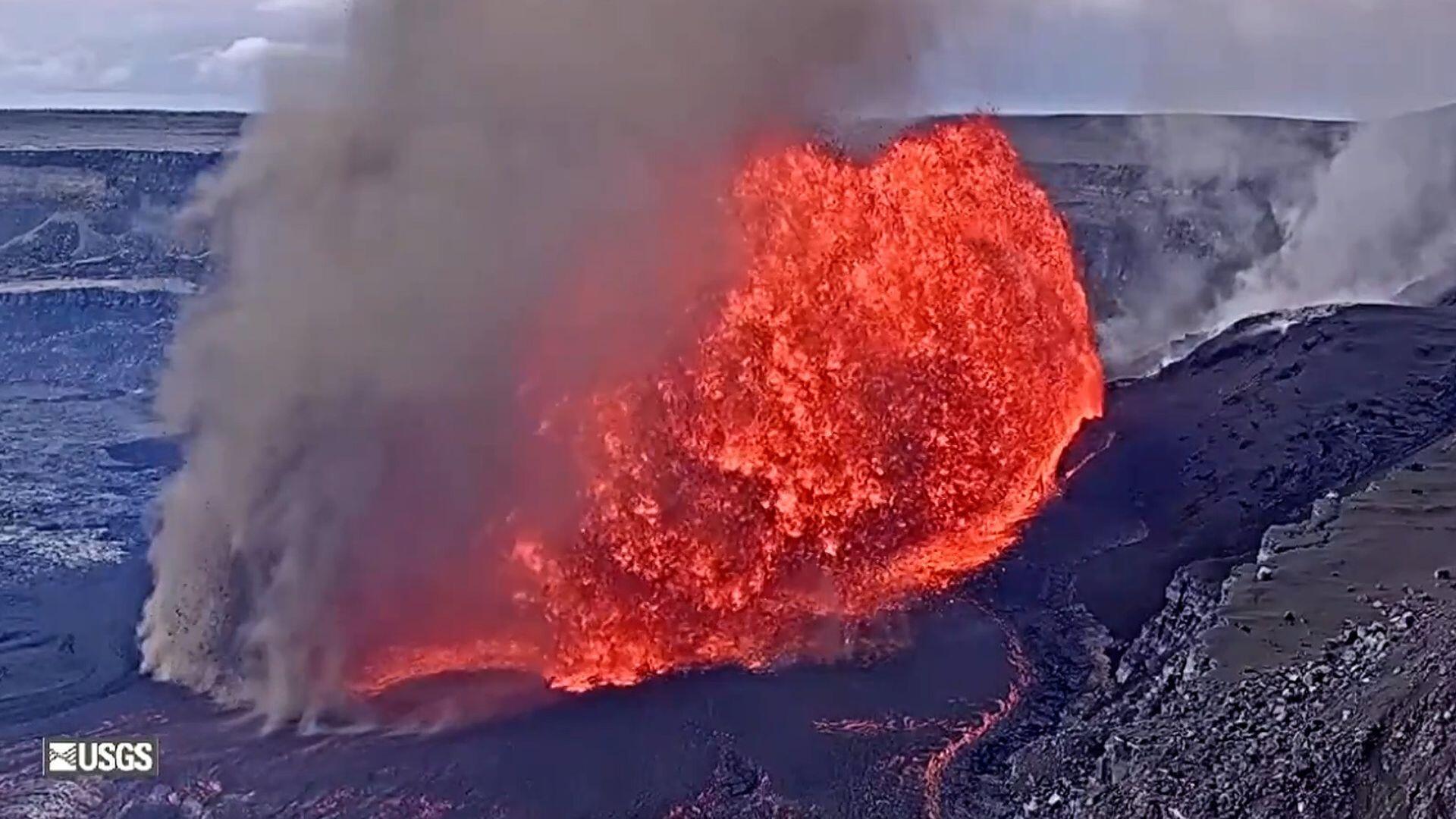Hawaii's Kilauea Volcano Erupts Again
Hawaii's Kilauea volcano erupted for the 32nd time since December, sending lava fountains up to 500 feet high and producing hazardous volcanic gases, while remaining contained within its summit crater.

Hawaii's Kilauea volcano erupted again on September 2, 2025, marking the 32nd episode in a prolonged eruptive sequence that began in December 2024. The eruption, which lasted approximately 13.4 hours, produced spectacular lava fountains reaching up to 500 feet (150 meters) into the sky and released an estimated 337 million cubic feet of molten rock, according to the U.S. Geological Survey.
Eruption Details and Hazards
The eruption began around 6:35 a.m. local time, with lava first emerging from the north vent in Halemaʻumaʻu Crater. As the morning progressed, additional vents on the south side and between the main vents also became active, contributing to the dramatic display. The eruption remained confined within the summit crater at Hawaii Volcanoes National Park, covering 40-50% of the crater floor with fresh lava flows. Notably, a rare atmospheric phenomenon—a volcanic tornado—was observed beside the lava fountains, caused by intense heat and turbulent updrafts in the eruption plume, offering scientists a unique opportunity to study such events.
While no injuries were reported, officials warned of significant hazards. The eruption released approximately 55,000 tons of sulfur dioxide, creating volcanic smog (vog) that can cause respiratory issues and other health problems for people downwind. Additionally, volcanic glass fragments and other debris were detected more than 10 miles from the vent, posing risks to nearby communities and potentially affecting major highways on the island.
Scientific and Cultural Significance
Kilauea is among the world’s most active volcanoes, and its ongoing activity has provided volcanologists with valuable insights into magmatic systems and eruption dynamics. Scientists are closely monitoring the site for further activity, as the cycle of eruption and pause is typical for Kilauea’s summit behavior. The volcano’s activity also holds deep cultural importance for Native Hawaiians, as Kilauea is considered the home of Pele, the goddess of fire and creation. Each eruption is both a geological event and a manifestation of the island’s living heritage.
Authorities have maintained restricted access to the caldera’s rim due to persistent dangers such as wall instability, ground cracking, and rockfalls, all of which are exacerbated by ongoing seismic activity. The public is urged to heed warnings and avoid closed areas, as the hazards extend beyond visible lava flows to include invisible gases and sudden geological changes.
The eruption drew crowds of spectators and international attention, underscoring both the awe-inspiring power of nature and the ongoing need for vigilance and scientific study in one of Earth’s most dynamic volcanic landscapes.
Sources
-
CBS News Hawaii's Kilauea volcano erupts again, shooting la...
-
ABC News Hawaii's Kilauea volcano erupts with lava pouring...
-
USGS Kīlauea - Volcano Updates | U.S. Geological Survey
-
afarTV (YouTube) Sep 2, 2025: Rare Volcanic "Tornado" at Kīlauea Vo...
-
USGS September 2, 2025 – Kīlauea summit eruption episod...